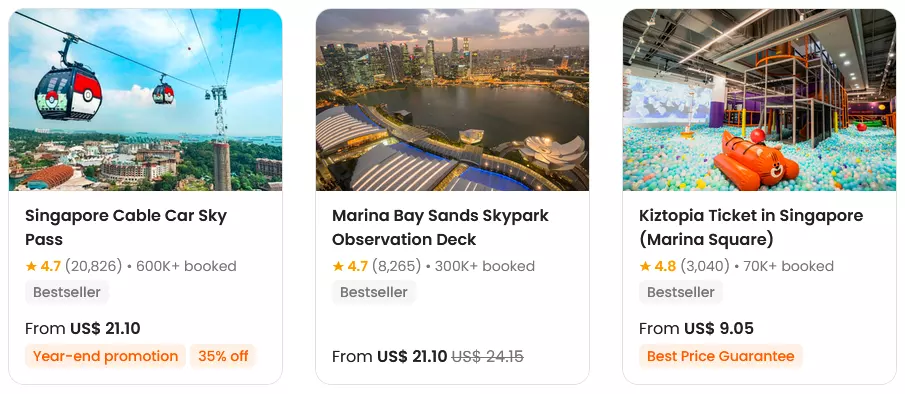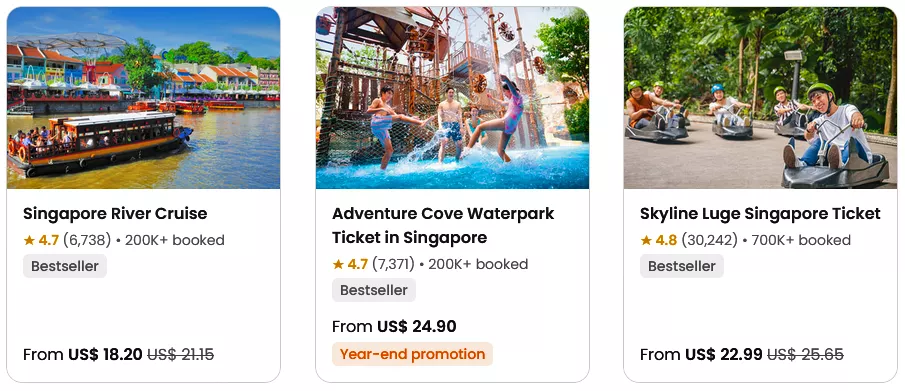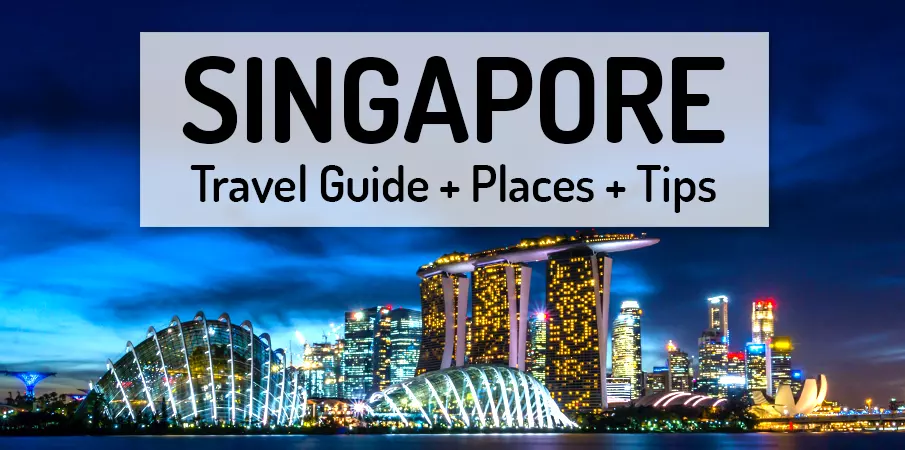
ℹ️ Useful Information
✈️ How to Get There
🚍 Transport Options
💵 Money + Currency
☀️ Weather in Singapore
🏡 Where to Stay
🔍 Activities + Places
❓ Questions + Answers
🎫 Book a Tour Online
🎫 Book Tickets Online
Singapore: The Island Gem of Southeast Asia.
Singapore, adorned with modern architecture and historical charm, stands tall as a majestic island nation at the crossroads of East and West Asia. Situated at the southern tip of the Malay Peninsula, Singapore maintains its significance due to its strategic location at the Malacca Strait and its outlook onto crucial maritime routes.
-
- Geography and Economic Drive: Its position as a trading hub is reinforced by its proximity to the sea, excelling in efficiency and innovation. Despite its small size, Singapore offers a dynamic microcosm with numerous islands and peninsulas that cluster a diverse community. The country has become synonymous with economic success and innovation, evident in its developed financial sector and technological advancements.
- Cultural Hub in the Heart of Asia: Singapore, with a significant influence from Chinese, Malay, and Indian cultures, flourishes as a cultural melody harmoniously blending distinct notes. The city witnesses collaboration among various ethnic groups, reflected in everyday life, architecture, and festival celebrations. This cultural gem in the heart of Asia attracts not only travelers but also businesses seeking inspiration and opportunities.
- Green Oasis and Future-Oriented Vision: Despite urbanization, Singapore boasts green oases and environmental care. Innovative projects like the „City in a Garden“ showcase the country’s commitment to sustainability. Singapore also leads in technological trends, investing in research and development to support its ambition of becoming a city of the future.
- Glimpse of Modernity and History in One City: Overall, Singapore blends a glimpse of modernity with a historical legacy, creating a fascinating distillate in the heart of Southeast Asia. Residents and visitors can explore this unique destination where the past meets the future, and traditional values intertwine with visionary outlooks.
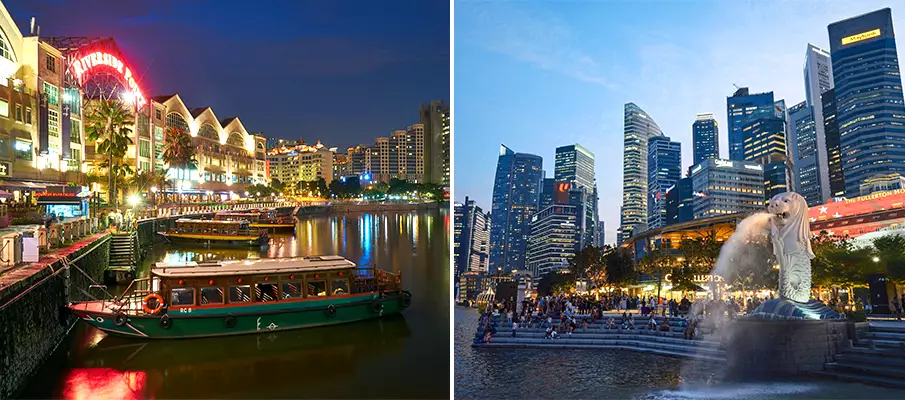
History of Singapore: From Malay Roots to the Present.
Singapore, despite being a modern global metropolis today, has a rich history that stretches back to ancient times. Before the arrival of Europeans, this territory was inhabited by Malays, Chinese, and Indians, foreshadowing its future diversity in culture and population. However, in 1819, Sir Stamford Raffles, a British trader, arrived and established a trading post for the British East India Company.
-
- Colonial Era and World War II: During the colonial era, Singapore became a key port and trading center of the British Empire. However, its strategic location proved fatal during World War II when it was occupied by Japanese forces. The period of Japanese occupation was challenging and marked by suffering for the people of Singapore.
- Path to Independence: After the war, Singapore returned under British rule, but over time, it began to desire its independence. In 1959, it gained autonomy, and in 1963, it joined Malaysia. However, this federation was short-lived, and in 1965, Singapore became an independent and sovereign state. This period was crucial for shaping Singapore’s identity and finding its place in the world.
- Economic Miracle and Modern Development: After independence, Singapore embarked on the path of an economic miracle. The leadership of Lee Kuan Yew led the country to rapid industrialization and economic growth. Singapore transformed from a port into one of the world’s leading financial and commercial centers. Innovation, modernization, and emphasis on education played a key role in this remarkable development.
- Contemporary Singapore and the Future: Today, Singapore symbolizes urbanization, technological progress, and cultural richness. The city takes pride not only in its impressive architecture and commercial influence but also in green initiatives and sustainable development. Singapore continues to play a significant role in the global economy and geopolitics, and its story serves as inspiration for other nations seeking the path to prosperity and modernity.
BOOK a TOUR / ACTIVITY in Singapore ➜

Culture and Festivals at the Heart of Singapore:
Singapore, despite boasting modern glamour, preserves deep roots in rich culture and traditions at the core of its identity. The city is a unique symbol of harmony among diverse ethnic groups, and this diversity is reflected in vibrant festivals that celebrate the richness of its cultural heritage.
Enchanting the Everyday: Chinese New Year
-
- Chinese New Year, one of the most significant events in Singapore’s calendar, brings a wave of joy and colors. Streets fill with dragon dancers, fireworks, and the abundance of traditional Chinese cuisine. The celebrations, spanning several weeks, unite the community and infuse everyday life with sparks of joy and hope.
Aromatic Cubes and Collective Illumination: Diwali
-
- Singapore also celebrates the festival of Diwali, bringing a luminous atmosphere and a touch of mystique to the city. Colorful candlelit gatherings and light installations illuminate the night sky, while the aromatic scent of incense fills the air. Diwali celebrates the Indian community and reinforces the spirit of community and tolerance in multicultural Singapore.
Malay Pride and Joy: Hari Raya Puasa
-
- Hari Raya Puasa, an Islamic festival celebrating the end of Ramadan fasting, brings an atmosphere of joy, gratitude, and unity to Singapore. Traditional rituals and a rich feast unite the Malay community and invite outsiders to share in this hospitality.
Festivals that Unite: Singapore Film Festival and Fashion Week
-
- Singapore is known not only for traditional festivities but also for modern cultural events. The internationally acclaimed Singapore Film Festival highlights independent cinema and allows local creators to shine. Fashion Week, on the other hand, celebrates design talent and showcases new trends in the fashion industry.
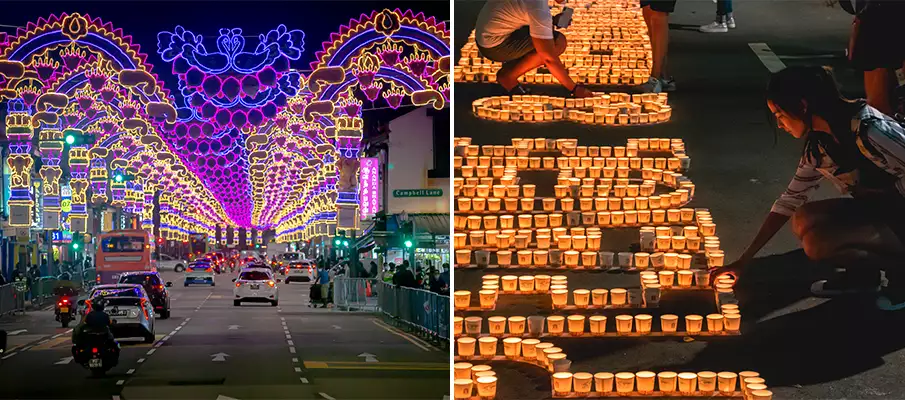
Religions in Singapore: Harmony of Faith and Culture.
Singapore, with its rich cultural heritage, is not only a cradle of ethnic diversity but also home to various religions coexisting peacefully and harmoniously. This diversity of religious traditions reflects the tolerance and respect that govern the city.
Buddhism: Path to Enlightenment
-
- Buddhism, reflecting the Asian population, has a strong presence in Singapore. From monasteries to temples, the Buddhist community actively practices its faith, bringing peace and harmony to the hectic urban life. Vesak, the Buddhist festival celebrating the birth, enlightenment, and passing of Buddha, is a significant event in Singapore.
Christianity: God’s Word and Community
-
- Christianity, carrying European and Western influences, also plays a crucial role. Churches, both traditional and modern, are scattered throughout the city, and Christmas and Easter ceremonies bring believers from different communities together. Christian schools and charitable organizations contribute to education and caring for the needy.
Islam: Ramadan and Unity of Faith
-
- Islam, mainly practiced by Malays and other Muslim communities, brings an atmosphere of respect and unity to Singapore during the month of Ramadan. Hari Raya Puasa, celebrating the end of fasting, unites believers in the spirit of joy and sharing.
Hinduism: Celebration of Gods and the Colorful World of Diwali
-
- The Hindu community, though smaller, brings colorful rituals and festivals to the city. Diwali, also known as the Festival of Lights, is one of the most prominent Hindu festivals in Singapore, illuminating the city with colors, fragrant incense, and joy.
The Power of Harmony in Diversity
-
- The harmony with which various religions coexist in Singapore is striking. The city strives to promote mutual respect and understanding among all faiths. Interreligious dialogues, joint celebrations, and charitable projects demonstrate that religious diversity is not an obstacle but rather a strength that reinforces the Singaporean identity.

Singapore’s Economy: Global Innovation and Market Growth.
Singapore, a seemingly small island nation, emerges as a business giant with an impressive economy that seamlessly blends tradition with modernity. Its development from a modest trading port to an international economic player is a remarkable success story built on innovation, efficiency, and a strategic location.
Trade Power at the Crossroads of Global Routes
-
- Positioned at the Malacca Strait and the crossroads of key maritime routes, Singapore became a vital port for international trade. However, since the mid-20th century, its economic strategy shifted from industrial production to a service-based economy, focusing on financial services, logistics, and research.
Asia’s Financial Hub
-
- Singapore’s economy underwent a rapid transformation from the 1960s, becoming one of the world’s major financial centers. Global investors, attracted by transparent rules and political stability, established their regional and global headquarters in Singapore. The city offers a wide range of financial services, from banking to investment management.
Innovation and Technological Progress
-
- Singapore has also evolved into an innovation hub, emphasizing science, research, and technological development. Support for education and research attracted many global tech firms and startups. Initiatives like „Smart Nation“ and investments in artificial intelligence highlight Singapore’s commitment to future technological advancement.
Logistics Player and Regional Distribution Center
-
- Due to its strategic location, Singapore has become a key player in logistics, serving as a regional distribution center for many companies. Modern ports, an efficient transportation network, and a free trade regime give Singapore a competitive advantage in the region.
Eco-friendly Approach to Sustainable Development
-
- However, Singapore’s economy is not solely about growth and performance; the city actively addresses sustainability issues. Initiatives like the „Green Plan“ aim for a more environmentally friendly and sustainable approach to economic development.
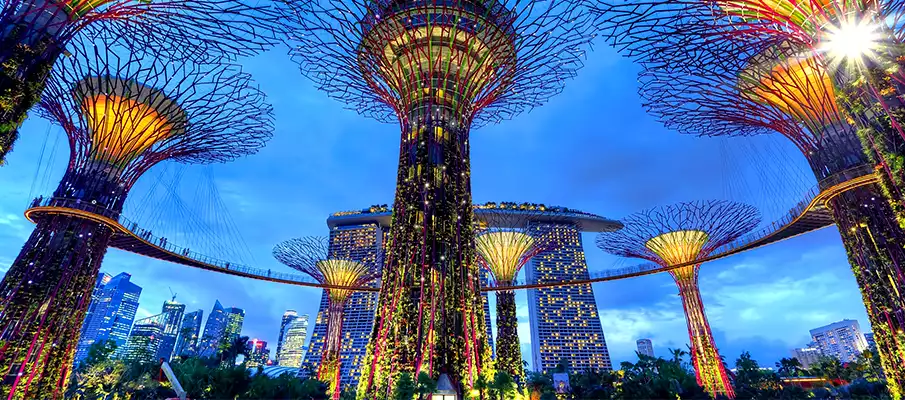
Tourism in Singapore: Fascinates and Allures Tourists.
Singapore, a small island state with an impressive showcase of modern architecture and cultural diversity, has become one of the most sought-after tourist destinations globally. Its attractions go beyond landmarks and natural beauty, encompassing a unique blend of culinary experiences, cultural richness, and modern luxury.
Cultural Mosaic on the Island
-
- Tourists come to Singapore not only for its iconic skyscrapers and futuristic skyline but also for strolls through historic quarters like Chinatown, Little India, and Kampong Glam, offering a glimpse into a rich cultural mosaic. Local festivals such as Chinese New Year, Diwali, and Hari Raya bring a lively atmosphere to the city, immersing visitors in authentic Singaporean life.
Culinary Mecca for Food Enthusiasts
-
- Singapore, known as a culinary Mecca, entices visitors with flavors from around the world. Street food stalls, traditional markets, and acclaimed restaurants offer a rich mix of Asian, European, and Latin American culinary experiences. Visitors can enjoy diverse dishes, from traditional laksa to modern gourmet creations.
Luxurious Shopping and Premium Experiences
-
- Singapore, also known as the „Luxury Paradise,“ welcomes shoppers with a range of luxury boutiques and shopping centers, including the iconic Marina Bay Sands. At the same time, it offers numerous premium experiences, from relaxation in luxurious spas to visits to sophisticated cocktail bars. The nearby Sentosa Island, with its attractions and beach opportunities, is a favorite spot for experiences.
Amusement Parks and Recreational Oases
-
- For families and adventurers, Singapore offers a variety of amusement parks and recreational oases. Universal Studios Singapore, the aforementioned Sentosa Island, and Gardens by the Bay are among the popular places. These locations provide not only entertainment but also tranquility and relaxation in beautiful natural surroundings.
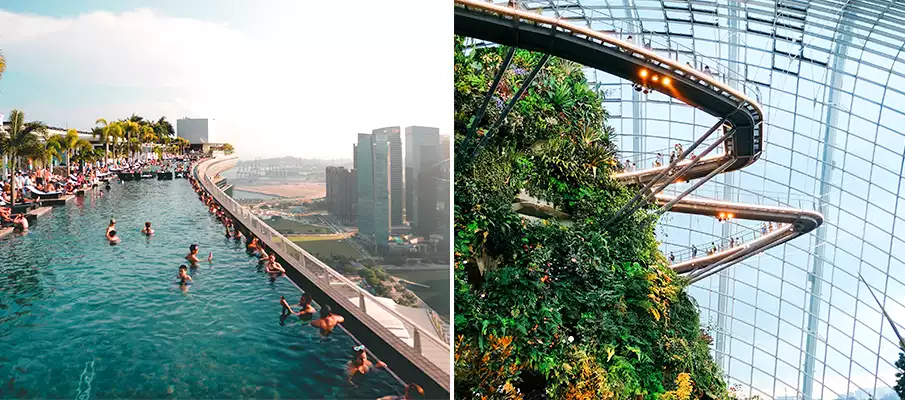
Top 10 Tourist Places for Visit in Singapore:
-
- Marina Bay Sands: Symbol of luxury and modern architecture, Marina Bay Sands is an iconic hotel, casino, and shopping complex that decorates Singapore’s skyline. Its unforgettable rooftop pool offers breathtaking views of the city, and you can even stay here to experience it.
- Gardens by the Bay: This futuristic garden with giant artificial trees known as Supertrees and the Cloud Forest glass conservatory brings a green paradise to the city. In the evening, the Supertrees illuminate in magical lights, making it a highly attractive modern attraction.
- Sentosa Island: A recreational paradise full of entertainment. Visit Universal Studios Singapore, stroll along white sandy beaches, and enjoy adventures at S.E.A. Aquarium. It also features shops and various dining options.
- Chinatown: A historic district full of markets, temples, and traditional shops. Visitors can taste authentic Chinese cuisine, visit Thian Hock Keng Temple, and stroll through picturesque streets. It’s a bustling shopping hub.
- Little India: A colorful and vibrant piece of India in the heart of Singapore. Visitors can explore traditional shops, Indian temples, and savor aromatic Indian cuisine.
- Orchard Road: A shopping mecca, Orchard Road is full of luxury boutiques, shopping centers, and gastronomic experiences. Ideal for fashion lovers and shopping enthusiasts.
- Singapore Botanic Gardens: A beautiful green oasis in the heart of the city, the Botanic Gardens offer relaxation and beautiful walks. The Orchid Garden is one of the most popular attractions.
- National Museum of Singapore: Historical treasures and artworks of Singapore are gathered in this museum. Interactive exhibits provide a captivating look into the city’s rich history and culture.
- Singapore Zoo and Night Safari: A zoo with vast enclosures for animals and Night Safari, offering a unique view of the nocturnal life of animals. Ideal for families and nature lovers.
- Haw Par Villa: This unique theme park features thousands of colorful statues and dioramas that bring Chinese myths and legends to life. A fascinating cultural experience.
BOOK a TOUR / ACTIVITY in Singapore ➜
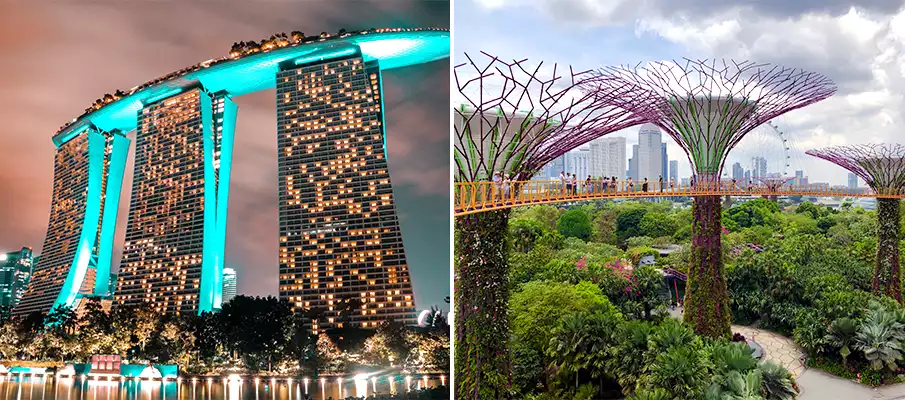
Top 10 Historical Sites for Visit in Singapore:
-
- Fort Canning: Fort Canning, with a rich history ranging from a military stronghold to a governor’s residence, presents an archaeological treasure with monuments, expansive gardens, and a museum. Every stone at this site narrates a story of Singapore’s past.
- Raffles Hotel: Opened in 1887, Raffles Hotel is not just a luxury hotel but also a symbol of colonial elegance. It has hosted many prominent figures, and its architecture draws us back to the era of British colonization.
- National Museum of Singapore: The National Museum of Singapore is home to many historical treasures and artworks documenting the development and identity of the city from its humble beginnings. Interactive exhibits engage visitors in a captivating journey through time.
- Chinatown Heritage Centre: The center in Chinatown offers an authentic glimpse into the lives of Chinese immigrants through reconstructions of historical scenes and fascinating exhibits. Each item tells its own story of the courage and efforts of the early residents.
- Little India: Immerse yourself in the vibrancy and energy of Little India, where traditional shops, Hindu temples, and a lively market bring an authentic piece of Indian culture to modern Singapore. Strolling through these streets is a journey into exotic history.
- Singapore River: The Singapore River, once a major maritime route, now offers a panoramic view of historical structures, former warehouses, and commercial houses reminiscent of the era of trading prosperity.
- Sri Mariamman Temple: The oldest Hindu temple in Singapore, Sri Mariamman Temple, with richly adorned architecture, is a significant religious and cultural symbol. Every sculpture and detail tells the story of Hindu traditions.
- Asian Civilisations Museum: The museum showcases the richness of Asian culture through artworks and exhibits. Each exhibition connects visitors with the ancient history and art of Asia.
- Kong Meng San Phor Kark See Monastery: The monastery with serene gardens, temples, and relics that illuminate the richness of Buddhist tradition. A walk through this monastery offers peace and spiritual reflection.
- Peranakan Museum: The museum unveils the traditional culture of the Peranakan community through artworks, clothing, and historical artifacts. Immerse yourself in the unique blend of influences and traditions of this fascinating ethnicity.
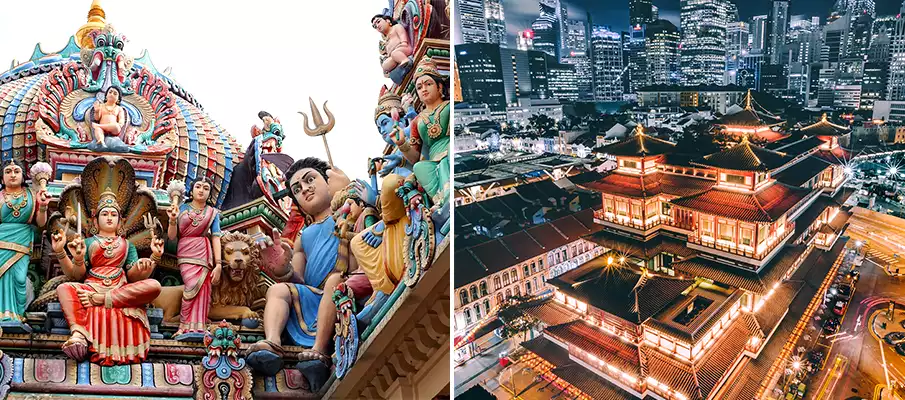
Sentosa Island: A Paradise of Relaxation in Singapore.
Sentosa Island, located just a few minutes drive from the center of Singapore, is an oasis of entertainment and relaxation. With a diverse mix of attractions and beaches, it offers visitors an unforgettable experience. Here are some useful pieces of information for those planning to visit this picturesque island:
Attractions on Sentosa Island:
Sentosa offers a variety of attractions; here are the most significant and popular ones:
- Universal Studios Singapore: A world-renowned theme park with attractions inspired by popular movies and TV shows.
- S.E.A. Aquarium: One of the world’s largest aquariums, where you can admire a diverse range of marine life.
- Adventure Cove Waterpark: A water park with slides, lazy rivers, and exotic pools, ideal for the whole family.
- Skyline Luge Sentosa: Adrenaline-filled fun on downhill tracks with panoramic views of the surrounding landscape.
- Sentosa Merlion: The symbol of Sentosa Island, a 37-meter tall Merlion statue offering a breathtaking view of Singapore.
How to Get to Sentosa Island:
- Cable Car: Offers a stunning view of the Singapore Harbor during the journey to the island.
- Monorail: From the mainland, you can use the monorail that takes you directly to Sentosa.
- On Foot: Sentosa is also accessible on foot via the iconic Sentosa Gateway Bridge, connecting the island to the mainland.
Useful Tips:
- Entrance Fee: Admission to the island is usually charged, but some hotels offer free visits to their guests.
- Best Time to Visit: It is recommended to arrive in the morning to have time for all attractions and spend a leisurely afternoon on the beach.
- Sunscreen and Hat: Sentosa has a tropical climate, so it’s advisable to protect yourself from the sun.
- Evening Show: Don’t forget the evening show at the Wings of Time resort, where fireworks, music, and light displays create an unforgettable end to the day.
- Also, visit the official Sentosa Island website for additional essential information.
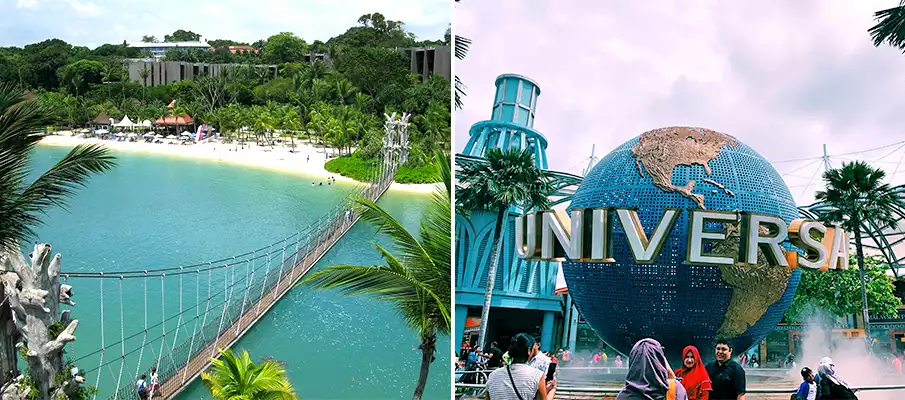
Is it Suitable to Travel to Singapore with Kids?
Traveling with children can be a challenge, but in the case of Singapore, it can also be a joyful and carefree experience. Singapore is known for being a safe country, with no significant security threats or risks. There are several reasons why Singapore is a favorite destination for families:
-
- 1. Safety: Singapore ranks among the safest destinations globally, making it an ideal place for families with children. Safe streets and low crime rates provide parents with peace of mind and the opportunity to relax.
- 2. Cleanliness and Hygiene: Another significant factor is the emphasis on cleanliness and well-maintained public spaces. Children can explore the city without concerns about dirt or hygiene issues.
- 3. Amusement Parks: Singapore hosts several world-renowned amusement parks, with Universal Studios on Sentosa Island being the most prominent. Families can find attractions for all age groups, from family rides to thrilling roller coasters.
- 4. Green Spaces: The city boasts impressive green areas such as Gardens by the Bay and the Singapore Botanic Gardens. Children can explore a variety of flora and fauna or simply play on expansive lawns.
- 5. Museums and Educational Activities: For education and entertainment, there are many museums offering interactive exhibits for children. The Science Centre Singapore is a fantastic place for kids to learn new things through play.
- 6. Child-Friendly Accommodations: Hotels and accommodations in Singapore are often tailored to the needs of families. Kids‘ clubs, special facilities, and friendly staff create an ideal environment for family relaxation.
- 7. Excellent Transportation: Efficient public transportation and an abundance of taxis make it easy to move around the city. Families don’t need to worry about the hassle of transporting children throughout the city.
Even though Singapore offers excellent conditions for families with children, it is always advisable to consider the family’s individual needs and current conditions, such as weather and potential travel restrictions. Taking these factors into account can turn a family vacation in Singapore into an unforgettable experience for all family members.

How to Behave + What to Watch Out for in Singapore?
When visiting Singapore, it’s important to respect local customs and adhere to the laws and regulations. Singapore is known for its cleanliness, safety, and multicultural environment. Here are some basic tips on how to behave and what to watch out for:
- Respect Local Customs:
- Clothing: Be mindful of the conservative nature of society. Avoid revealing clothing in religious areas and traditional neighborhoods.
- Feet: Avoid showing your feet to people or sacred objects, such as statues of gods.
- Chewing Gum Restrictions:
- Gum is prohibited in public transportation and certain public spaces. Chew gum with caution to avoid fines.
- Respect Cleanliness Rules:
- Keep public spaces clean. Do not litter to uphold local norms.
- Adhere to Laws:
- Photographing military and police facilities is prohibited. Note that taking pictures of certain buildings and areas may require permission.
- Be Mindful of Local Etiquette:
- As part of local etiquette, a slight bow is customary when greeting. Handshakes are not common.
- Smoking Restrictions:
- Smoking is prohibited in certain public spaces and modes of transportation. Limit smoking to designated areas.
- Respect Local Religions:
- In religious sanctuaries, wear head coverings and follow guidelines regarding footwear.
- Watch Alcohol Limits:
- Alcohol is prohibited in some public spaces. Respect laws regarding public alcohol consumption.
- Respect Local Privacy:
- Photographing unknown individuals, especially in religious neighborhoods, should be done with respect for their privacy.
- Be Mindful of Traffic Rules:
- Follow traffic rules. Cross roads only at designated crossings and obey traffic signals.
Respecting local customs and rules helps create a pleasant environment for both tourists and local residents. Remember that Singapore is known for its harmony and tranquility, and contribute to maintaining this atmosphere by respecting local traditions and norms.
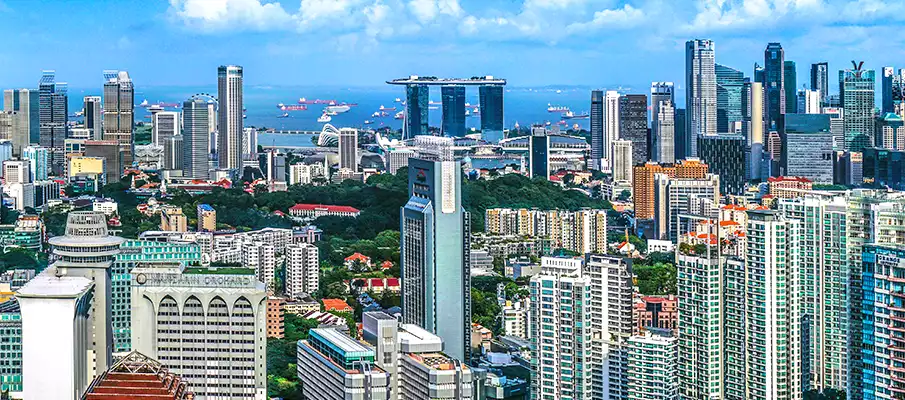
What is the Safety Situation in Singapore?
Singapore is generally considered one of the safest destinations in the world. The city-state boasts low crime rates, and safety standards are high. The following information may provide you with a better understanding of safety in Singapore:
- Low Crime Rates: Singapore has a very low crime rate compared to other major cities. Violent crime is rare, and petty thefts are limited.
- Safety in Public Spaces: Public spaces are typically safe, even at night. Urban neighborhoods and tourist areas are well-monitored and well-lit.
- Security in Public Transportation: Public transportation, including the metro and buses, is considered safe. Transport systems are modern, efficient, and well-maintained.
- Hygiene and Health Standards: Singapore maintains high hygiene and health standards. Drinking water is safe, and healthcare is available at a high level.
- Conservative Approach to Criminal Activity: Criminal penalties in Singapore can be harsher than in other countries. For example, drugs are considered a serious offense, and violation of local laws can lead to severe punishments.
- Traveling with Children: Singapore is considered a safe place for families with children. Playgrounds, parks, and family-friendly facilities are common.
- Caution in Public Events: During major public events or festivals, security measures are usually heightened. Visitors should take care of their personal belongings and follow the instructions of security authorities.
However, it is always advisable to exercise common precautionary measures, as anywhere else abroad. Although Singapore is considered safe, visitors should be vigilant and adhere to local laws and regulations. Before traveling, it is also good to inquire about current safety conditions with your ministry or embassy.
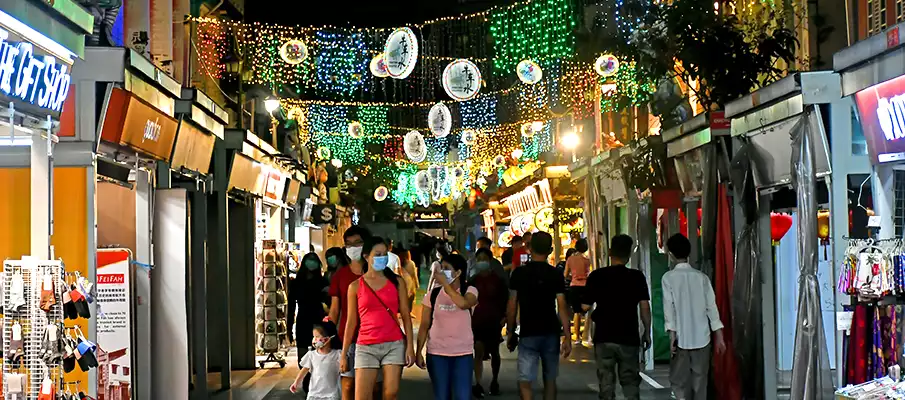
What Souvenirs Can You Bring from Singapore?
Singapore offers a wide range of attractive souvenirs that visitors can purchase as mementos or gifts. There are also plenty of modern and luxury brand stores from around the world. Here are some traditional and popular souvenirs you can bring from Singapore:
-
- Orchids: Singapore is known for its beautiful orchids. You can buy floral arrangements or even orchid seeds as a unique souvenir.
- Merlion: The Merlion, a symbol of Singapore, is a statue combining the head of a lion and the body of a fish. There are various Merlion forms like magnets, keychains, or figurines.
- Batik Textiles: Batik is a traditional method of dyeing fabrics that creates beautiful patterns. Batik clothing, scarves, or tablecloths are popular souvenirs.
- Malaysian Pearls: Singapore is known as a traditional transit point for pearl trade. Pearls from Malaysia, available in jewelry stores, are a popular souvenir.
- Kopi Luwak: For coffee enthusiasts, purchasing Kopi Luwak, coffee made from beans passed through a civet’s digestive tract, can be an interesting experience.
- Traditional Chinese Herbs: You can buy traditional Chinese herbs and tea blends in Chinese tea houses, which are common in Singapore.
- Diamond Jewelry: Singapore is renowned for its diamond trade. Jewelers offer a wide selection of diamond jewelry popular among visitors.
- Durian Sweets: Durian, known as the „king of fruits,“ is a beloved tropical fruit. You can purchase various durian sweets, from chocolate candies to dried fruits.
- Bamboo Products: Bamboo products, such as bowls, trays, and decorative items, are traditional and eco-friendly souvenirs.
- Traditional Chinese Matches: Traditional Chinese matches with beautiful paintings or ornaments are a unique and practical souvenir.
When buying souvenirs, be mindful of customs regulations, especially regarding the import of plant or animal products. The selection of souvenirs in Singapore is rich and diverse, and everyone can find something to remind them of the beauty of this modern and multicultural city.
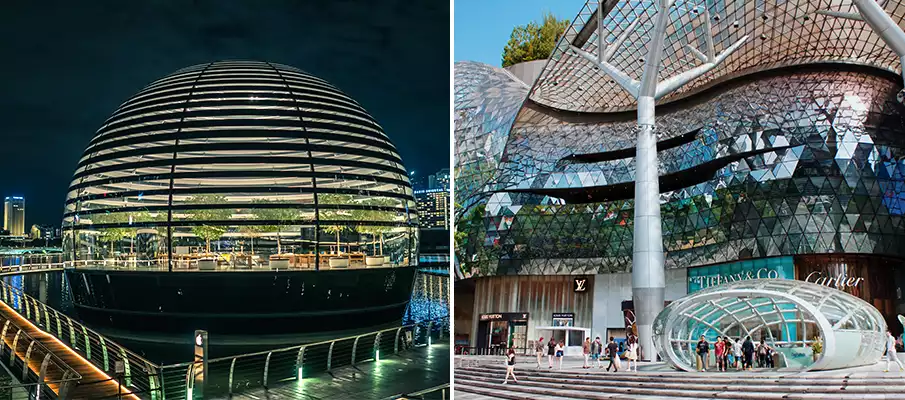
Food and Diverse Cuisine in Singapore:
Singapore, a cultural mosaic in the heart of Asia, is not only a global financial center but also a paradise for food lovers. Its cuisine is rich and diverse, reflecting a blend of ethnic influences that create a unique taste symphony. International cuisine is also common in some places in Singapore.
Multicultural Dining:
Singaporean cuisine blends Chinese, Malay, Indian, and Peranakan cultures, creating a wide range of flavors and dishes. At every turn, you can discover diverse foods, from traditional to modern culinary creations.
Popular Dishes and Foods in Singapore:
- Hainanese Chicken Rice: Tender chicken served with fragrant rice and spicy sauce.
- Chilli Crab: Crab meat drenched in spicy chilli and tomato sauce, symbolizing the deliciousness of Singapore’s seafood treasure.
- Laksa: Coconut soup with fish broth, noodles, shrimp, and meat, creating a harmony of exotic flavors.
- Hokkien Mee: Stir-fried noodles with seafood and pork, sprinkled with lime and chili.
- Char Kway Teow: Stir-fried noodle mix with prawns, eggs, and meat, served with a distinctive spicy flavor.
Tips for Food Enthusiasts:
- Street Markets and Hawker Foods: Visit traditional street markets and hawker stalls where you can find authentic Singaporean foods at affordable prices.
- Durian Experience: For adventurous taste buds – try durian, known as the „king of fruits,“ even though most people appreciate its distinctive aroma.
- Culinary Classes: Attend culinary classes and learn to prepare traditional dishes under the guidance of experienced chefs.
- Dessert Selection: Don’t forget to taste desserts such as kaya toast, ice kachang, or pandan cake, representing the sweet side of Singaporean cuisine.
For food lovers, Singapore is an endless adventure. Whether you venture into a luxury restaurant or taste delights at the market, every bite is a unique experience full of aromas, flavors, and traditions.
BOOK a TOUR / ACTIVITY in Singapore ➜
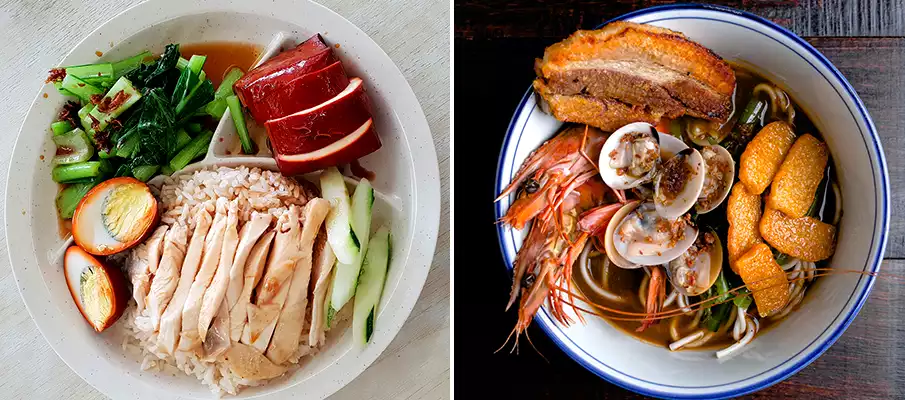
Why You Should Visit or Not Visit Singapore?
Overall, visiting Singapore is a matter of personal preference. As a shorter visit in Asia, it’s not a bad idea. For those who appreciate a cosmopolitan atmosphere, modern architecture, and a rich culinary scene, Singapore can be a fascinating destination. On the contrary, for those who prefer nature, a quieter environment, and lower costs, there may be other destinations that better suit their expectations.
👉 Why To Visit Singapore:
-
- Cultural Diversity: Singapore is a cosmopolitan city with rich cultural diversity. By visiting, you can experience a harmonious social mix of Chinese, Malay, Indian, and other cultures.
- Modern Architecture: The city is known for its futuristic architecture, including iconic buildings like Marina Bay Sands and the Supertree Grove in Gardens by the Bay.
- Safety and Cleanliness: Singapore is considered one of the safest places in the world with high standards of safety and cleanliness in public spaces.
- Gastronomic Delights: Singaporean cuisine is a unique blend of flavors, whether enjoying traditional street food or an elegant dinner in a luxury restaurant.
- Entertainment and Attractions: The city offers a wide range of attractions, from world-renowned amusement parks to cultural events and modern art galleries.
👉 Why Not To Visit Singapore:
-
- High Costs: Singapore can be one of the more expensive travel destinations, with high costs for accommodation, dining, and attractions. However, there are some cheaper options, such as accommodation.
- Rules and Restrictions: Some strict rules and restrictions, especially regarding behavior and public order, may limit some visitors.
- Tropical Climate: Singapore’s tropical climate can be very hot and humid, which may be uncomfortable for some people.
- Small Size: Singapore is a small city-state, and if you’re looking for a diverse natural landscape experience, you might miss vastness.
- Legal Restrictions: Some laws, such as strict rules about chewing gum or smoking in public places, may be unusual for some people.
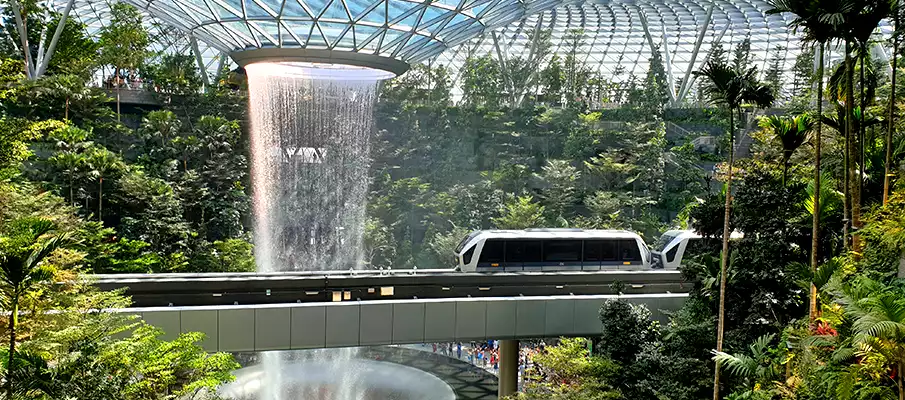
✈️ How to Get to and Travel in Singapore?
Air travel is the most efficient way to get to Singapore. You can take flights by various international airlines. Upon arrival at Changi International Airport, one of the best-equipped airports in the world, the gateway to the fascinating world of modern Asia opens.
For adventurous solo travelers, it’s also possible to travel from Malaysia through the border town of Johor Bahru in the south. Convenient train journeys from Kuala Lumpur to Johor Bahru and bus routes directly to Singapore offer not only efficient transportation but also picturesque views of the countryside. Bus connections are another option for those who want to explore the region according to their preferences.
1. International Flights to Singapore:
-
- There are various direct international flights to Changi Airport in Singapore
- Changi International Airport: Upon arrival in Singapore, travelers enter Changi International Airport, considered one of the most modern and well-equipped airports in the world. The airport offers a wide range of services, from comfortable lounges to entertainment and shopping options.
2. By Train/Bus from Malaysia:
-
- Rail Connection: Singapore is connected to Malaysia by the railway network. International trains link Johor Bahru with Kuala Lumpur, providing a comfortable and interesting journey between these two destinations. The train journey offers comfort and views of the surrounding countryside.
- By Bus to Singapore: Buses are another transportation option from Malaysia to Singapore. There are international bus services crossing borders, allowing travelers easy access to Singapore. Tickets are relatively inexpensive, and modern buses are in operation.
- Border Crossings: When traveling overland, it’s necessary to consider border crossings between Malaysia and Singapore – specifically the Woodlands Checkpoint. Ensuring valid travel documents and meeting entry conditions is essential for a smooth journey.
- Book tickets / flights to Singapore from Asian countries online at Baolau ➜ or 12go.asia ➜
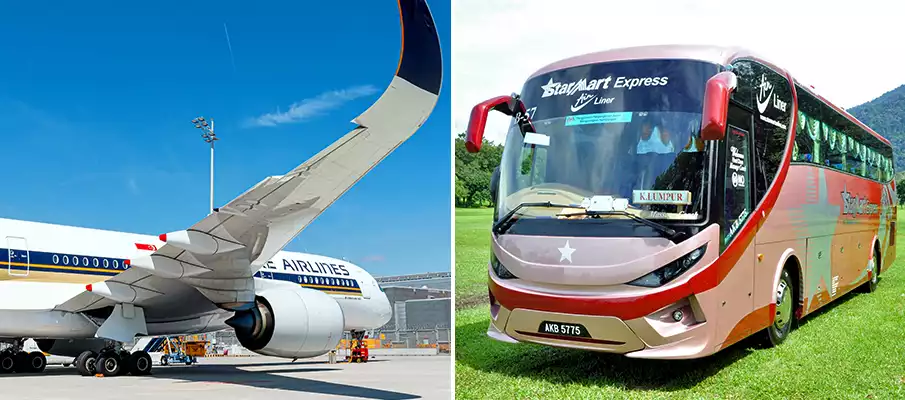
🚍 What Are the Transportation Options in Singapore?
In Singapore, you’ll find a wide range of transportation options that will allow you to explore its beauties easily and efficiently. Take a quick trip by the MRT metro, an underground railway network connecting all major parts of the city. Explore the extensive bus network that takes you to every part of Singapore at an affordable price. Taxis are also available, easily accessible and comfortable, ideal for quick transfers.
Moreover, waterways are a common means of transportation in Singapore. Sail by boat or ferry and enjoy views of the city skyline. Forget ticket worries – electronic cards and modern payment systems will simplify your travel. The most utilized options for travelers are above-ground trains/metro and buses.
Transportation Options in Singapore:
-
- MRT (Mass Rapid Transit): MRT is an efficient and popular underground railway system in Singapore. It covers most major areas of the city, allowing for quick and comfortable transit.
- Buses: Singapore has an extensive network of bus routes covering the entire city. Buses are a cheap and accessible option for traveling around Singapore.
- Taxis: Taxis are easily available and are often considered a convenient mode of transportation, especially for shorter distances or when you need quick transport.
- Above-Ground Trains: In addition to MRT, there are above-ground trains connecting more distant areas of the city and suburbs to the center.
- Boats and Ferries: Singapore is surrounded by water, making boats and ferries a popular mode of transportation to some islands or surrounding areas.
- Pedestrian Zones: Some areas in central Singapore are pleasant for walking, especially in historic quarters and shopping boulevards.
Where and How to Buy Public Transport Tickets in Singapore:
-
- MRT and Buses: Tickets for MRT and buses can be purchased at machines at MRT stations or directly from the bus driver. You can also use contactless payment cards like EZ-Link or Singapore Tourist Pass to facilitate public transport payments.
- Taxis: Taxis have meters, and payments are made in Singapore dollars. Most taxis also accept credit cards.
- Above-Ground Trains: Tickets for above-ground trains can be purchased at train stations.
- Boats and Ferries: For boat or ferry rides, tickets need to be purchased at the port or respective terminals.
Overall, the ticket purchasing system in Singapore is convenient and accessible. The use of contactless payment cards or tourist cards makes traveling easy and eliminates the need for cash.

💵 Money and Currency Guide in Singapore:
Singapore, a small state with significant economic influence, offers travelers a unique experience not only with its modern skyscrapers and exotic cuisine but also with its financial system. Before your trip, familiarize yourself with some key information about money and currency in Singapore.
Currency and Financial System in Singapore:
-
- The currency in Singapore is the Singapore Dollar (SGD). One Singapore Dollar is divided into 100 cents. Banknotes are available in denominations of 2, 5, 10, 50, and 100 dollars, while coins are in circulation in values of 1 dollar and smaller.
Money Exchange in Singapore:
-
- Exchange Offices: Singapore has many exchange offices, both public and in banks, offering currency exchange services. Banks usually provide a fair exchange rate.
- ATMs: Most ATMs in Singapore accept international cards. ATMs are common and easily accessible throughout the city.
Credit Card Payments in Singapore:
-
- Most Places Accept Cards: Almost all shops, restaurants, and hotels accept international credit cards such as Visa, MasterCard, and American Express.
- Contactless Payments: Contactless payments are common in Singapore. Most stores have modern payment terminals that allow for quick and convenient transactions.
How Much Money to Bring to Singapore?
-
- Banknotes and Cards: It is recommended to bring a small amount of Singapore dollars for potential on-site expenses. Credit cards are widely accepted, allowing for minimal cash transactions.
- Estimated Expenses:
- Food: 20-50 SGD per person per day (depending on the type of dining).
- Transportation: 10-20 SGD per day (including public transport and taxis).
- Other Expenses: Depends on plans and preferences.
- Contactless Payment Cards for Convenience: Many travelers will appreciate the convenience of contactless payments through credit cards, reducing the need to carry a large amount of cash.
Before traveling to Singapore, check the current exchange rate and foreign transaction fees with your bank to plan your financial expenses wisely. Most travelers will find plenty of options for convenient and secure payments in Singapore.
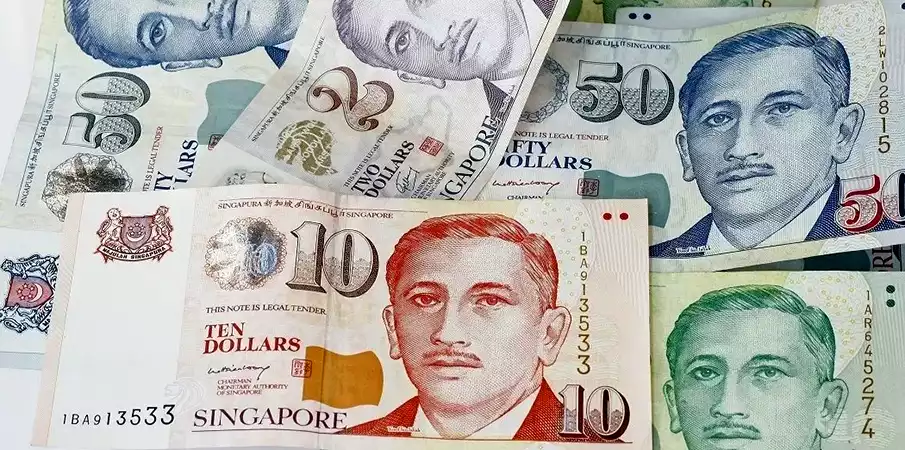
☀️ Weather in Singapore + Best Time to Visit:
Singapore is a destination you can visit anytime throughout the year. However, each season offers a slightly different experience, so choose based on your personal preferences and plans. Before planning your trip to this cosmopolitan destination, it’s useful to familiarize yourself with the local climate and the optimal time to visit.
Climate in Singapore:
Singapore has a tropical and humid climate throughout the year with minimal seasonal changes. The climate can be divided into two main periods:
-
- Rainy Season (November – January): During the rainy season, expect higher precipitation and frequent storms. Temperatures remain high, averaging around 24-31 °C.
- Dry Season (February – October): During this time, rainfall decreases, and temperatures range between 25-32 °C. July and August are the warmest months.
Best Time to Visit Singapore:
The best time to visit Singapore depends on your preferences and plans:
-
- February – April: This period represents the transition from the rainy to the dry season. Temperatures are pleasant, and rainfall decreases, making it a delightful time to visit.
- July – October: For those who prefer warmth and sunny weather, the summer months are ideal. Rainfall is usually lower, and this period offers many festivals and events.
- November – January: Despite being the rainy season, this time has its charm. Lower temperatures and intense greenery make Singapore beautiful during these months.
| Month | Weather | Description |
|---|---|---|
| January | Warm and slightly humid | January in Singapore brings temperatures around 25-31°C. The month is generally dry, with low rainfall. Air humidity is lower, making outdoor activities enjoyable. Brief summer showers can provide refreshment. |
| February | Warm and dry | February in Singapore continues with warmth and average temperatures of 26-32°C. It’s usually drier, meaning less rainfall and more sunny days. This period is ideal for walks in the park and enjoying garden attractions. |
| March | Warm and humid | March in Singapore brings rising temperatures around 27-33°C and increasing humidity. Despite occasional showers, it’s an ideal time for nature walks and visiting gardens and parks. |
| April | Hot and dry | April in Singapore is the hottest month with temperatures reaching up to 34°C. Rainfall is minimal, although short summer storms can freshen the air. Caution is advised for outdoor activities due to high temperatures. |
| May | Hot and humid | May in Singapore brings high temperatures and increasing humidity. Showers may be more frequent, so it’s important to be prepared for occasional rains. Explore indoor attractions and enjoy local culinary specialties. |
| June | Hot and humid | June in Singapore continues with high temperatures and rising humidity. Rainfall may be more frequent, making it important to be prepared for occasional showers. Discover indoor attractions and indulge in local cuisine. |
| July | Rainy | July in Singapore marks the start of the summer monsoon with frequent and intense rainfall. Temperatures remain warm to hot, but rain can affect outdoor activities. Take the opportunity to taste local dishes during rainy days. |
| August | Rainy | August in Singapore continues with ongoing rainfall, although it may be less intense than in July. Temperatures remain warm and suitable for evening strolls. Visiting parks and gardens can be ideal during rainy days. |
| September | Rainy | September in Singapore is one of the rainiest months with intense rainfall. Flooding may be an issue, although accommodation and flight prices often decrease. Visit museums and galleries to avoid the rain. |
| October | Rainy | October in Singapore continues with rain, but rainfall gradually diminishes. Temperatures remain warm and can offer a quieter atmosphere for visiting landmarks and local attractions. Check the current forecast for planning outdoor activities. |
| November | Warm and slightly humid | November in Singapore brings improving weather with a slight increase in temperature. Rainfall decreases, providing pleasant conditions for outdoor activities. The city prepares for Christmas celebrations, and decorations begin to illuminate the streets. |
| December | Warm and dry | December in Singapore continues with pleasant and dry weather. Temperatures range around 25-31°C, making it ideal for Christmas celebrations and a warm holiday. Local parks and light shows create a magical atmosphere to end the year. |
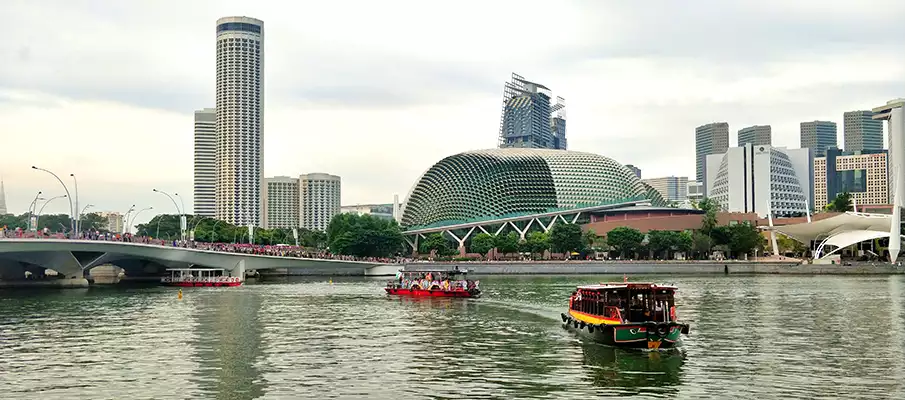
🏡 Accommodation in Singapore / Where to Stay:
Singapore blends traditional culture with modern elegance, offering a wide range of accommodation options for every budget and taste. There are modern mid-range and upscale hotels, hostels for low-cost travelers, and top-notch luxury hotels. Here are some of the best areas for accommodation in Singapore:
1. Marina Bay: Luxury combined with city views
-
- Marina Bay is a symbol of modern Singapore. This area is full of luxury hotels, such as the iconic Marina Bay Sands with a rooftop pool and breathtaking views, or Parkroyal Collection Marina Bay. Accommodation here not only offers excellent service but also stunning cityscape views. This area is among the more expensive accommodation options.
2. Orchard Road: For shopping and entertainment
-
- Orchard Road is a shopping paradise, and staying in this district is ideal for those who want shops and restaurants right at their doorstep. Consider options like Arena eSports @ Orchard.
3. Bugis: For style and fashion
-
- Bugis is a modern area where history meets contemporary style. If you love fashion, culture, and a lively atmosphere, staying in Bugis might be an ideal choice. There are also some more budget-friendly accommodation options. In this area, you’ll find a wide range of hotels from luxury to mid-range. Some good tips include Capsule@Hive Bugis or Cube Boutique Capsule Hotel @ Kampong Glam.
4. Chinatown: Cultural experience and local cuisine
-
- For those seeking a cultural experience and authentic Singaporean cuisine, Chinatown is an excellent choice. This neighborhood offers quality accommodation with Chinese architectural style and serves as a great starting point for exploring local culture. Consider budget-friendly options like BEAT. Arts Hostel @ Chinatown or Rucksack Inn @ Temple Street.
5. Little India: Colorful atmosphere and markets
-
- Little India is full of colorful markets, temples, and authentic restaurants. This neighborhood offers accommodation that brings you closer to the vibrant atmosphere of Indian culture. Ideal for those who want to experience authentic Singaporean life. Some good tips include The Hive Singapore Hostel or 7 Wonders Hostel.
6. Sentosa Island: For relaxation and entertainment
-
- If you’re looking for an escape from the bustling city, Sentosa Island is a paradise for relaxation and entertainment. On this island, you’ll find luxury resorts with beach views and access to many attractions. Here, the options are a bit more expensive but popular choices include ONE15 Marina Sentosa Cove or Village Hotel Sentosa by Far East Hospitality.
Tips for choosing accommodation in Singapore:
-
- Plan Ahead: Singapore is a popular destination, so it’s good to book accommodation in advance, especially during peak seasons.
- Budget vs. Luxury: Singapore offers a wide range of accommodation for every budget. Consider what’s important to you – basic comfort or a luxurious experience.
- Transportation: Consider the location of accommodation in relation to the places you want to visit and the availability of public transportation.
➜ Accommodation in Singapore – Book HERE ➜
🔍 Interesting Places + Activities in Singapore:
-
- Marina Bay Sands: Marina Bay Sands is not just a hotel; it’s an architectural marvel and a cultural icon of Singapore. Welcoming visitors with luxurious rooms and an incredible rooftop infinity pool with panoramic views of the city. This symbol of modern Singapore is a must-visit.
- Gardens by the Bay: Gardens by the Bay is a magical place where nature meets futuristic architecture. Supertree Grove, with its evening illumination, creates a fairytale atmosphere. The Flower Dome hosts extensive botanical gardens with exotic plants. It’s like a journey into the future combined with natural beauty.
- Singapore Zoo: Singapore Zoo is not just about observing animals; it’s an interactive adventure. The Night Safari opens up the world of animals in the dark, allowing you to observe their natural activities. A unique experience for nature lovers.
- Chinatown: Upon entering Chinatown, you’ll find yourself in a different world. Colorful markets, historic temples, and narrow streets offer an authentic glimpse into Chinese culture. Try traditional Chinese cuisine and stroll through traditional shops.
- Sentosa Island: Sentosa Island is a paradise for relaxation and entertainment. Luxury resorts, white beaches, and amusement parks, including Universal Studios Singapore, create a mix of relaxation and adrenaline-filled fun.
- Little India: Immerse yourself in the vibrant atmosphere of Little India, where you’ll find spice markets, small temples, and traditional shops. Visit stalls with Indian delicacies and taste authentic Indian cuisine.
- National Museum of Singapore: The National Museum of Singapore is considered a treasure trove of history and culture. Permanent and temporary exhibitions uncover the story of Singapore from its beginnings to the present. Visit this museum and explore the city’s rich heritage.
- Singapore Botanic Gardens: Singapore Botanic Gardens are the green heart of the city, featuring extensive flower gardens, lakes, and tropical flora. Peaceful walks in this historic setting are a refreshing escape from the bustling city life.
- Haji Lane: Haji Lane is a lane full of creativity, fashion boutiques, and cozy cafes. Get inspired by independent design, browse through vintage shops, and taste delightful desserts at local cafes.
- Singapore Flyer: The Singapore Flyer, one of the tallest Ferris wheels in the world, offers panoramic views of the city and surrounding islands. A romantic experience during sunset or evening hours.
- Peranakan Houses: In the Katong area, explore traditional Peranakan houses adorned with pastel colors and rich patterns. Each house has its own story and design, providing a captivating glimpse into the past.
- ArtScience Museum: The ArtScience Museum, located in the iconic shape of an open lotus flower, combines science and art. Interactive exhibitions bring an innovative perspective on the intersection of technology and creativity.
-
- Esplanade – Theatres on the Bay: Esplanade is the cultural heart of the city, blending artistic performances, concerts, and visual arts. Its unique design, resembling two durian fruits, makes it an icon on the shores of Singapore Bay.
-
- Kampong Glam: Kampong Glam is a picturesque neighborhood with a rich history, home to the Sultan’s Palace. Stroll through Malay and Arab shops, taste local culinary delights, and admire art galleries.
-
- Southern Ridges: Southern Ridges offers a walking trail connecting several parks and bridges. Walking along this green corridor provides an escape into nature with stunning views of the city and green landscapes.
Tourist Activities in Singapore:
-
- Night Safari at Singapore Zoo: The night safari at the zoo is a magical experience where you can observe the activity of wild animals in the dark. The expedition offers a unique view of the nocturnal life of animals.
-
- Cycling in East Coast Park: Spend a relaxing day cycling in East Coast Park. This extensive recreational area along the coast offers bike paths, beaches, and seaside restaurants.
-
- Culinary Walk in Hawker Centre: Embark on a culinary walk to Hawker Centre and taste local specialties. The diversity of flavors and aromas will introduce you to authentic Singaporean cuisine.
-
- Hiking on Henderson Waves: Cross Henderson Waves, the highest pedestrian bridge in Singapore, and enjoy beautiful views of the city and surrounding nature.
-
- Water Show at Marina Bay: Conclude the day with a light and music show at Marina Bay. The colorful fountain and projections on the water wall create an unforgettable spectacle.
📍 Singapore – Google Map:
❓ FAQ + Travel Tips for Your Stay in Singapore:
1. What is the best time to visit Singapore in terms of weather?
-
- Singapore has a tropical climate with minimal temperature fluctuations throughout the year. The best period is from February to April when there is less rainfall and pleasant temperatures around 25-31 °C. This is also an ideal time for exploring attractions and outdoor activities.
2. What is the recommended clothing and equipment for a visit to Singapore?
-
- Due to high humidity, it’s advisable to wear light and breathable clothing. Bring a waterproof umbrella as short, intense rains are common. Comfortable footwear is crucial for city walks and exploration.
3. What are the transportation options in Singapore?
-
- Singapore has an efficient and extensive public transportation network, including the MRT, buses, and ferries. Tourists can use daily or multi-day cards for unlimited rides. Taxis are also common and convenient for shorter distances.
4. What are the key tourist attractions in Singapore?
-
- Singapore offers a variety of attractions, including Gardens by the Bay, Marina Bay Sands, Sentosa Island, and Singapore Zoo. For effective planning, it’s good to divide visits into geographical areas and use available public transportation.
5. What is the procedure for visiting Gardens by the Bay?
-
- Gardens by the Bay is an extensive garden complex with iconic Supertrees. For a complete visit, including the Flower Dome and Cloud Forest, it’s ideal to plan at least half a day. The evening light show is also an unforgettable experience.
6. Where to find authentic Singaporean cuisine?
-
- Singapore is a paradise for foodies with a rich variety of cuisines. Local markets, known as „hawker centres,“ are great places to taste authentic dishes. It’s recommended to try laksa, Hainanese chicken rice, and chili crab.
7. What are the best shopping places in Singapore, and what to bring home?
-
- Orchard Road is the main shopping destination in Singapore with numerous stores. Traditional souvenirs include batik clothing, orchid perfumes, and traditional Singaporean teas. Little India and Chinatown are also great places for authentic shopping.
8. What are the best activities on Sentosa Island, and how long does a visit take?
-
- Sentosa Island offers a wide range of activities, including Universal Studios Singapore, S.E.A. Aquarium, and Adventure Cove Waterpark. For a complete exploration, a tourist should plan at least a full day. The evening show „Wings of Time“ is worth seeing.
9. What are suitable destinations outside the main tourist areas of Singapore?
-
- Apart from the main tourist attractions, it’s worth visiting places like the historical district Kampong Glam or Pulau Ubin with nature trails. Transportation by subway and ferry is convenient and safe.
10. What are the safety measures and tips for tourists in Singapore?
-
- Singapore is considered one of the safest places in the world, but tourists should still prioritize their safety. Adhere to local laws, keep valuables secure, and respect local culture. Quality healthcare is easily accessible in Singapore’s reputable medical facilities.
11. What is the impact of local customs and traditions on tourists?
-
- Singapore has a diverse culture, and respecting local customs is key to a positive experience. For example, showing respect to local temples and appropriate attire when visiting religious sites are important aspects. Respect for local regulations, such as no chewing gum on public transport, is also expected.
12. What are the rules for taking photographs in Singapore?
-
- Photography is generally allowed in public spaces, but it’s essential to respect others‘ privacy. When taking photos in religious places, it’s always better to ask for permission and follow guidelines set by local rules.
13. What are the accommodation options in Singapore?
-
- Singapore offers a wide range of accommodation options, from luxury hotels to budget-friendly hostels. Areas like Marina Bay, Orchard Road, and Clarke Quay are popular for tourists due to their proximity to main attractions and good accessibility to public transport.
14. What are the best practices for payment and handling cash in Singapore?
-
- Singapore is a modern city with widespread acceptance of non-cash payments. Credit cards are commonly accepted in shops and restaurants. If using cash, it’s advisable to have smaller bills and coins, especially for market purchases and hawker centres. Accommodations and luxury shops usually accept international cards without issues.
15. How to book and purchase tickets from Malaysia to Singapore?
-
- Tickets and flights for travel to Singapore from Malaysia can be purchased on Baolau or 12go.asia.
- Here you can also find other tickets or flights for Asia, as well as other countries and places, all in one place.
- One of the most popular travel route is from Kuala Lumpur to Singapore
16. What is the currency of Singapore and where to exchange money?
-
- The currency of Singapore is the Singapore Dollar (SGD). The Singapore Dollar is the only official currency used in Singapore. The abbreviation for the Singapore Dollar is SGD. In Singapore, you can use Singapore Dollars for most common transactions, both in cash and through contactless payment cards or digital payment methods. Money exchange to Singapore Dollars is possible at banks, currency exchanges, and authorized money changers. In Singapore, exchanges are usually available at airports, shopping centers, and tourist-frequented areas.
17. Are there any nice beaches in Singapore for relaxation or swimming?
-
- Singapore is not primarily known for its beaches like Thailand, but you can still find a few. Perhaps the best place for beach relaxation is Sentosa Island. Here, you’ll find several smaller beaches and coves, such as Tanjong Beach, Palawan Beach, or Siloso Beach. All these beaches are well-maintained and artificially created. Further east from the city center of Singapore, there is the several-kilometer-long East Coast Beach.
BOOK a TOUR / ACTIVITY in Singapore ➜
| Interesting Facts about Singapore: | Description |
|---|---|
| 1. History as the Malay Sultanate: | Singapore has an incredibly rich history dating back to its time as part of the Malay Sultanate. Its strategic location on trade routes earned it a significant position as a vital trading hub. Formerly known as Temasek, meaning „sea town,“ it was colonized by the British Empire, marking the beginning of colonial influence that persists in the city’s architecture and cultural traditions. |
| 2. Colonial Period of the British Empire: | During the colonial period, Singapore became a key port of the British Empire. Architectural heritage from that time includes elegant buildings like the 1887-built Raffles Hotel, which served as a center for social life. British influence extended to education and administration, shaping the city’s later development. |
| 3. Independence and the Emergence of Modern Singapore: | In 1965, Singapore gained independence from Malaysia, becoming a sovereign state. Under the leadership of its first Prime Minister, Lee Kuan Yew, it underwent radical reforms transforming the small city into an economic giant. With a focus on education, urbanization, and industrial development, Singapore became one of the world’s most advanced nations, known as the „Singapore miracle.“ |
| 4. Multicultural Society: | Singapore is unique for its ethnic and religious diversity. Chinese, Malays, Indians, and Arabs live harmoniously, influencing daily life, traditions, and especially cuisine. The city’s multicultural character is evident in neighborhoods like Chinatown, Little India, and Arab Street, where you can experience the authentic atmosphere and flavors of these cultures. |
| 5. Economic Miracle: | After gaining independence, Singapore experienced rapid growth, earning the label of an „Asian tiger.“ Its economy focuses on financial services, manufacturing, logistics, and the technology sector. The city became home to many multinational companies and is considered one of the best places for business globally. |
| 6. Iconic Merlion: | The Merlion, Singapore’s symbol, combines elements of a fish and a lion, representing the city’s maritime history and courage. Erected in 1972 near Marina Bay, it has become one of the most recognized symbols of the city. The Merlion is a notable example of blending tradition with modern identity. |
| 7. Modern Architecture: | Singapore’s skyline boasts futuristic architecture. Marvels like Marina Bay Sands, with its sky park and infinity pool, and the Singapore Flyer, a giant Ferris wheel, dominate the skyline. These structures not only symbolize technological progress but also attract visitors from around the world. |
| 8. Street Food Culture: | Singapore is a paradise for foodies with a rich street food culture. Hawker centers like Maxwell Food Centre and Lau Pa Sat offer a wide range of delicious dishes. From the popular chili crab to tasty laksa, you can savor authentic Singaporean flavors on every corner. |
| 9. Local Culinary Delights: | In addition to street food, Singaporean cuisine also offers unique delights. Don’t miss out on traditional laksa, flavorful Hainanese chicken rice, or the iconic chili crab. Local cuisine is influenced by various cultures, creating rich and unforgettable gastronomic experiences. |
| 10. Futuristic Sentosa Island: | Sentosa Island is an entertainment and recreation center, blending modern entertainment with natural beauty. In addition to attractions like Universal Studios and S.E.A. Aquarium, you can enjoy tranquil beaches, golf courses, and luxurious resorts. The island offers entertainment for everyone, whether you’re into adventure or relaxation. |
Food / Cuisine in Malaysia|Food / Cuisine in Cambodia|Thai Cuisine and Food|Culture of Thailand|Food and Cuisine in Laos|Money in Thailand
